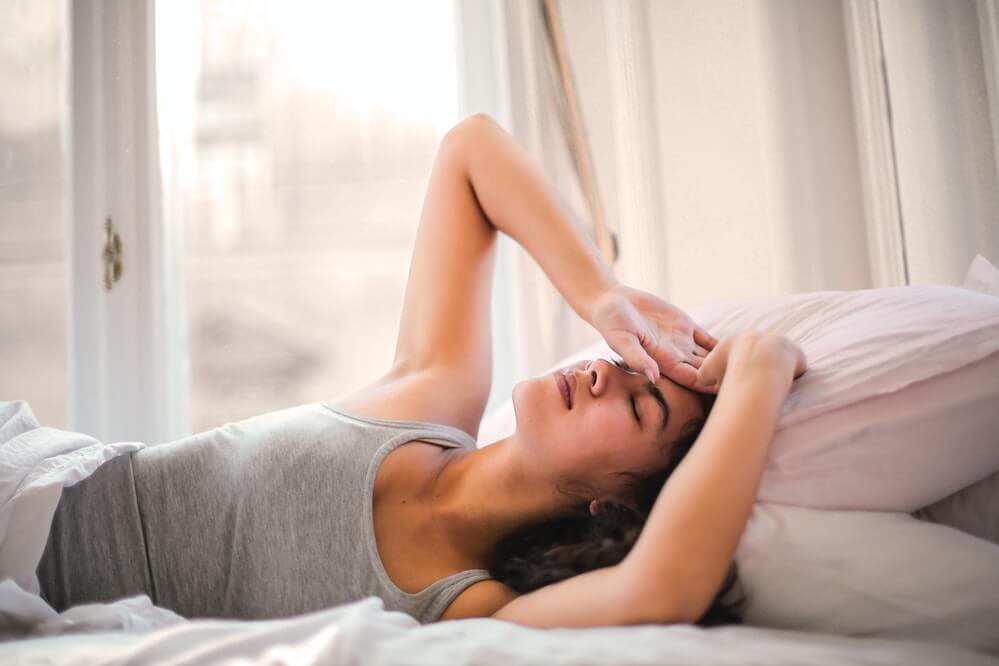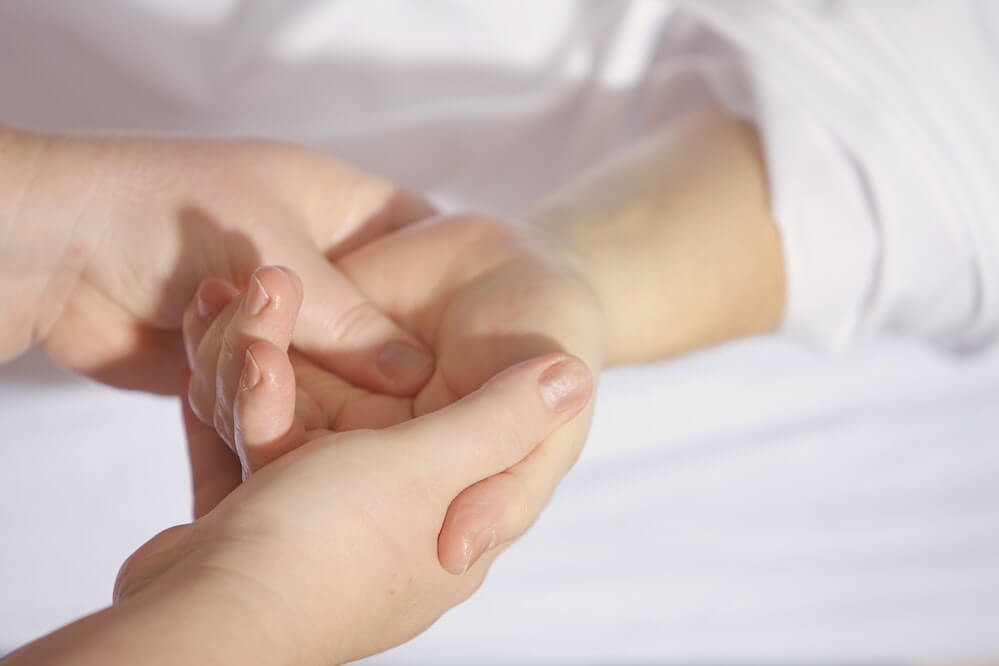We all have experienced a headache at one point or another or, even worse, have them on a regular basis. Painkillers may seem lifesavers for getting rid of them, but long-term usage can lead to kidney, liver, heart, and blood circulation problems. That’s where Traditional Chinese Medicine comes in handy, with acupressure as an ancient practice for relieving pain, especially headaches. While acupuncture uses needles to activate pressure points to relieve pain, acupressure involves massaging or pressing firmly in the relevant pressure points.
In this article, we’ll elaborate on questions like, “What are pressure points?”, “Can acupressure stop headaches?”, or “Where are the acupressure points for headaches?”.
What Are Pressure Points?
According to Traditional Chinese Medicine (TCM), the flow of life force or Qi is essential to health, and it circulates in our bodies in channels or meridians. Furthermore, a person can experience pain and sickness when Qi gets blocked.
Pressure points (acupoints) are the spots where the flow of Qi can be freed and help the body to heal and restore balance.
Can Acupressure Stop Headaches?
While there is a need for more research to be done to conclude the efficacy of acupressure for stopping headaches, studies have shown that acupressure can help relieve headaches. It can also help significantly reduce fatigue among people with migraine.
Types of Headaches
There is not just one kind of headache. They can be caused by different conditions and can hinder carrying out normal daily activities.
Tension headache
It’s the most common type of headache, and it is associated with tightness in the neck or scalp muscles. It causes pain or discomfort in the head, neck, or scalp.
Tension headaches can be divided into two main categories:
1. Episodic tension-type headaches: Mild or moderate pain lasting from 30 minutes to a week.
2. Chronic tension-type headaches: Evolve from episodic tension headaches, with daily or frequent episodes lasting hours, or they can be chronic.
Symptoms include:
– Pain on both sides of the head,
– Tender feeling in the affected area
– Feeling pressure or tightness in the head
The most common triggers of tension headaches are:
– Excessive smoking
– Physical or emotional stress
– Eye strain
– Alcohol use
– Jaw-clenching or teeth grinding
– Colds or the flu
– Caffeine
– Fatigue
Cluster headache

This uncommon type of headache usually affects one side of the head. It can last from 15 minutes to three hours and occur daily (at the same time each day) or almost daily for weeks or months.
Symptoms include:
– One-sided pain
– Drooping eyelid and watery eyes on the affected side
– Sweating on the affected side
– Pale skin or flushing on the face
– Redness and swelling around the eye on the affected side
– Excessive tearing
– Restlessness
The triggers of cluster headaches include:
– High altitudes
– Exertion (physical activity)
– Foods high in nitrites, such as preserved meats and bacon
– Bright light
– Heat
– Cocaine
– Alcohol
– Excessive smoking
Migraine

Migraines are severely throbbing or pulsing headaches on the one side of the head. Because of the severe and lasting pain, migraines can affect daily activities.
They can progress through four stages: prodrome, aura, attack, and post-drome. Symptoms for each stage include:
– Prodrome: Shows one or two days before a migraine, and its symptoms could be food cravings, neck stiffness, constipation, increased urination, mood changes, and frequent yawning.
– Aura: This stage happens before or during the migraine and shows reversible symptoms of the nervous system such as vision loss, needles sensation in arms or legs, difficulty speaking, seeing flashes of light or various shapes, etc.
– Attack: A migraine attack can last from 4 to 72 hours if untreated and might show symptoms like throbbing or pulsing pain, nausea and vomiting, sensitivity to light, and pain on one side of the face or both sides.
– Post-drome: It’s the last stage of migraines, and one might feel drained, washed out, and confused.
Common triggers include:
– Hormone fluctuations (estrogen)
– Dehydration
– Skipped meals
– Exposure to chemicals
– Sleep disruption
– Stress
– Weather changes
– Alcohol
– Caffeine
Sinus headache
Mucus buildup in the sinus may lead to sinus infections, which, in turn, can cause headaches. This headache is often focused in the front of the head and the sinuses area. Common causes of sinus headaches are:
– Seasonal allergies
– Nasal polyps
– Deviated septum
– The common cold
Symptoms include:
– Stuffy nose
– Worsening pain when bending forward or lying down
– Fatigue
– Decreased sense of smell
– Pain and pressure in the forehead, cheeks, upper teeth, and brow
– Sinus headaches are often confused with migraines, as both can cause nasal congestion, facial pain, and a runny nose. However, the nasal discharge from a sinus headache is discolored, whereas a clear nasal discharge with a migraine.
Pressure Points for Headaches
Acupressure practitioners believe that these pressure points can help relieve headaches. Here’s their location and how to activate them:
Union valley

This pressure point is located on the web where the thumb and index finger join together. To treat headaches and tension in the neck, follow these instructions:
– Locate the acupoint by joining the thumb and index finger as the “okay” sign, where you’ll see a high point where the two fingers connect.
– Pinch the acupoint with the thumb and index finger of the opposite hand firmly for 10 seconds.
– Make small circular motions with your thumb on the pressure point in one direction and then the other for 10 seconds each.
– Repeat the process on the other hand.
Drilling bamboo
The pair of drilling bamboo points can relieve headaches caused by sinus pressure and eye strain. They are located at the indentations where the bridge of the nose connects with the ridge of the eyebrows and can be activated by using both index fingers to apply firm pressure to the points for 10 seconds, releasing and repeating for both points at once.
The gates of consciousness
The gates of consciousness points can help relieve headaches caused by the tension in the neck. You can find the location at the base of the skull in the hollow areas between the two vertical neck muscles. To stimulate these points, you have to place your index and middle fingers onto these pressure points, press firmly upward for 10 seconds, and release and repeat for both sides at once.
The third eye
The third eye point can relieve sinus pressure and eye strain. You can find this point between your eyebrows. To activate this point, you can apply constant pressure with your index finger for a minute or gently massage it in a rotational motion.
The shoulder well
The shoulder well point can help ease tension headaches and relieve stiffness in the neck and shoulder muscles. This pressure point is found halfway between the base of the neck and the shoulder joint. To activate this point, you can use the opposite hand’s index and middle finger, apply gentle pressure to the acupoint, and do the same for the opposite side.
Conclusion
Headaches can take a toll on the quality of your daily life. If you experience frequent headaches and want to set aside painkillers, you should try alternative medicine for managing pain, mainly acupressure. Acupressure is a safe and effective technique for relieving pain and pressure in the head and neck. Of course, one of its benefits is that you can activate the acupoints for headaches in the comfort of your home. However, if you have no experience and have never been advised on how to do it, it is always recommended to first turn to a professional for adequate treatment.
Lastly, if you want to take a holistic approach to health and wellness, visit our Holistic Wellness Center.